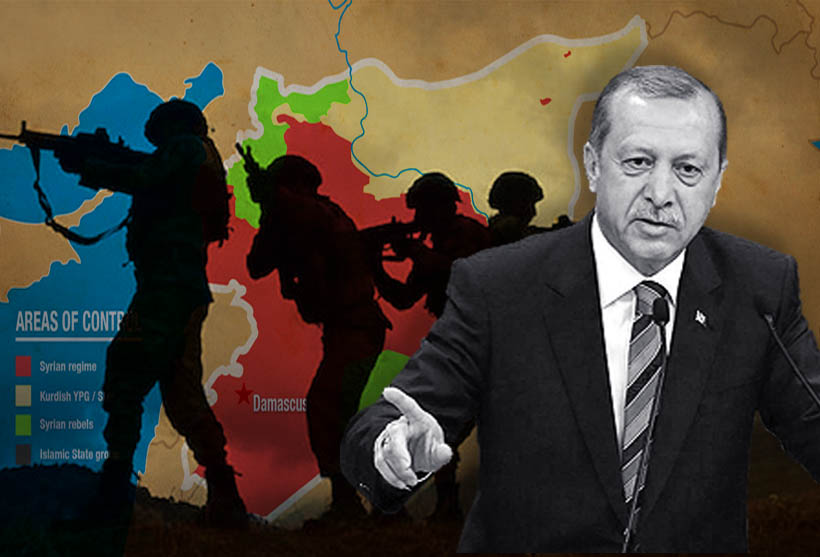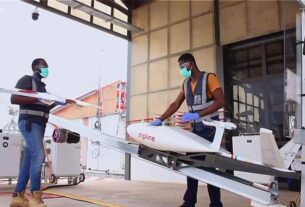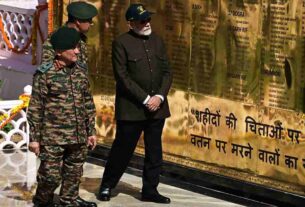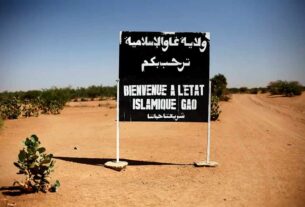How Turkey’s ‘Peace Spring’ changed the dynamics of Syria’s war
Tue 15 October 2019:
Turkey’s military action on Syria will have consequences far beyond the ‘safe zone’ it is trying to establish.
After months of pressuring, lobbying and amassing troops along the border with Syria, Turkish President Recep Tayyip Erdogan finally succeeded in securing the approval of US President Donald Trump for a military operation in northeast Syria. Operation “Peace Spring” is the third major Turkish military operation inside the country since 2016. The scope and depth of the operation are still unknown, but it is likely to change the dynamics of the Syrian conflict in a major way.
Seizing the moment
Since 2012, Erdogan has been trying to establish a “safe zone” along the section of Turkey’s border with Syria that falls to the east of the Euphrates River.
The Syrian opposition succeeded in pushing the forces of the Syrian regime out of the country’s northeast in the summer of 2012, allowing the People’s Protection Units, known by its Kurdish acronym YPG, to take control. Turkey says the YPG is the Syrian branch of the Kurdistan Workers Party (PKK), which it classifies as a terrorist organisation.
Before 2016, Erdogan’s plans to intervene militarily in Syria were opposed by both the Obama administration and the Turkish military, which the president did not yet have complete control over. Erdogan, as a result, declined to participate in the US-led war against the Islamic State of Iraq and the Levant (ISIL or ISIS), declared by Obama following the fall of Mosul, in the summer of 2014.
The United States was not, therefore, allowed to use the Incirlik airbase in the south of Turkey in the war against ISIL. It had, instead, to rely on bases further afield, such as al-Udiad in Qatar and Riffa in Bahrain. Meanwhile, the US shunned an offer by Turkey to arm and train Syrian opposition factions to confront ISIL and opted instead to use the YPG as a local proxy against ISIL.
To conceal the Kurdish identity of the US’s chosen proxy in Syria, the Syrian Democratic Forces (SDF), which includes fighters from non-Kurdish groups, was established in 2015. The SDF was trained and armed by the US military.
When Turkey eventually decided to change course and allow the US to use its territories in the fight against ISIL in the summer of 2015, it was too late. By then, Russia had entered the fray on the side of the Syrian regime, changing the dynamics of Syria’s conflict completely. This meant Turkey was now participating in a conflict entirely different from the one it was offered a role in a few years earlier. The change in circumstances was demonstrated clearly in November 2015, when Turkey shot down a Russian warplane near its border with Syria, unleashing a major crisis with Russia.
Securing the borders west of the Euphrates
Having received lip service by its NATO allies for its confrontation with Russia, Turkey found itself stuck between a strong rival – Russia – in the Syrian territories west of the Euphrates and an ally unsympathetic to its needs – the US – in the Syrian territories east of the Euphrates.
The failed military coup in Turkey in July 2016 provided Erdogan with an opportunity to mend fences with Russia and to get out of this strategic trap. Just one month after the attempted coup, during which Russia expressed support for Erdogan, Turkey was allowed to move into northwest Syrian and clear the area from both ISIL and the YPG. The operation, named “Euphrates Shield”, paved the way for the establishment of the Astana process, wherein Russia and Turkey tried to reach a modus vivendi in Syria. Iran later also joined this arrangement.
In February 2018, Russia allowed Turkey to launch yet another operation, this time named “Olive Branch”, to expel the YPG from Afrin. Having succeeded in securing the section of its border with Syria to the west of the Euphrates River, Turkey turned its attention to the east following this operation. With the defeat of ISIL in that region looming, Turkey started preparing to fill the vacuum that the planned departure of US forces would inevitably create there. To the dismay of Turkey, however, the US decided to stay.
Focusing on Trump
In January 2018, the State Department, under former Secretary of State Rex Tillerson, outlined a plan for a long-term US military presence in Syria. He defined four key objectives for the open-ended US military presence in northeast Syria. They included ensuring a lasting defeat of ISIL and al-Qaeda, creating the right conditions for the return of Syrian refugees, curbing Iranian influence in the region and holding UN-supervised elections aimed at securing a new leadership in Damascus. The latent motive behind this strategy, as Tillerson put it, was that the US “cannot repeat the mistake of 2011, where a premature departure from Iraq allowed al-Qaeda to survive and eventually become ISIS”.
Trump was unconcerned. In March 2018, he fired Tillerson and the following month he took almost everyone off guard when he announced the full withdrawal of US troops from Syria. Under pressure from members of his own administration, as well as from regional and European allies, Trump gave the Pentagon and the State Department six months to finish the job against ISIL and pull troops out of Syria.
Turkey took advantage of this schism within the US administration and opened a direct channel with Trump. Hence, by the end of the six month period, Erdogan had called Trump and received assurances that the US would soon be leaving. Trump was quoted as telling Erdogan during their December 2018 phone call on Syria: “It’s all yours. We are done.”
The withdrawal plan, however, was shelved again and the US and Turkey entered into a lengthy negotiation on the issue that yielded no concrete results for almost a year.
On Sunday, October 6, another phone call between Erdogan and Trump changed the dynamics again. Trump decided that he would allow Turkey to go ahead with its military operation and establish a “safe zone”. Three days later, the Turkish army entered Syria.
New dynamics
Although it is still unclear whether the US is planning to fully withdraw from Syria, or merely give way for Turkey to establish a “safe zone” near its border, the Turkish operation has already transformed the dynamics of the Syrian conflict, resulting in new alignments inside Syria and out.
The Arab Gulf states – Saudi Arabia, the United Arab Emirates (UAE), Bahrain and Kuwait – as well as Egypt and Israel have already voiced their opposition to Turkey’s move. Speaking at an emergency Arab League meeting in Cairo on October 12, Arab League Secretary-General Ahmed Aboul Gheit called Turkey’s military operation in northeast Syria an “invasion of an Arab state’s land and an aggression on its sovereignty”. Saudi Arabia State Minister for Foreign Affairs Adel al-Jubeir also condemned the Turkish operation and demanded an immediate end to it.
Over the past year, Riyadh has exerted tremendous efforts to convince Trump to maintain a substantial military presence in northeast Syria to counterbalance both Turkey and Iran. Last November, the Saudis committed $100m to convince the US to remain in Syria. At one point, Riyadh even offered to send troops to patrol the area alongside the US and the YPG. Turkey’s “Peace Spring” operation is, therefore, seen as a major blow to Saudi efforts to keep Ankara out of Syria.
Israel has also condemned the Turkish military operation and expressed sympathy with the YPG. “Israel strongly condemns the Turkish invasion of the Kurdish areas in Syria and warns against the ethnic cleansing of the Kurds by Turkey and its proxies,” Israel’s Prime Minister Benjamin Netanyahu wrote. “Israel is prepared to extend humanitarian assistance to the gallant Kurdish people.”
Israel has always been a champion of Kurdish separatism. The establishment of a greater Kurdistan is seen by Israel and some circles in Saudi Arabia as a means to weaken the major powers in the region, such as Turkey, Iran, Iraq and Syria.
Surprisingly, Turkey’s Astana partners, Russia and Iran, have shown more flexibility.
Moscow stated that it understands Turkish security concerns in northern Syria and joined forces with the US to block an EU-drafted statement at the UN Security Council calling upon Turkey to end its military operation.
Iran, too, expressed a similar position. This signals a major shift in the policies of the two countries towards the Turkish incursion. Earlier this year, both Moscow and Tehran had expressed opposition to Ankara’s plans to establish a “safe zone” in northern Syria.
Now, however, Iran is not in a position to alienate Turkey while facing crippling US sanctions. Moscow also relies on Turkey’s cooperation to end the conflict in Syria and secure its interests there. In addition, Russia’s major concern at the moment is to expel the US from Syria, punish the Kurds for allying themselves with Washington and push them back into the lap of the Syrian regime.
This is exactly what has happened. Having been abandoned by their American patron, the Kurds now have nowhere to go but back to their old ally in Damascus. This is why they struck a deal with the Syrian regime and asked it to deploy its forces to the Turkish border. This constituted a major shift in the alliances shaping Syria’s conflict.
This new arrangement will likely pit the Syrian regime forces against Turkey and the Turkish-backed Syrian opposition. Will Iran and Russia support the Syrian regime in this fight as they did in Idlib? At this stage, Moscow will likely try to work out an agreement between Turkey and the Syrian regime, revive the 1998 Adana Accord on border security between the two sides and establish a status quo acceptable to all.
Moscow made similar arrangements in the northwest in Afrin and in the areas affected by Turkey’s “Euphrates Shield” operation. Moscow ultimately wants all foreign forces to permanently leave Syria, but it gives securing the departure of the US priority over everything else. Because once Washington gets out, Moscow will be able to decide the fate of Syria on its own, and manipulate the actions of all the other actors involved in the conflict, including Turkey, Iran, Saudi Arabia and Israel.


The statements, views and opinions expressed in this column are solely those of the author and do not necessarily represent those of Independent Press.
Think your friends would be interested? Share this story!




